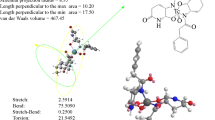Abstract
Influence on the clearance of background radioactivity from the blood was studied by using a chemically galactosylated antibody to the radiopharmaceutical. Sodium iodide I 125-labelledPisum sativum agglutinin (125I-PSA) was used as the model tumor-imaging radiopharmaceutical in this series of experiments. Rabbit (anti-PSA) immunoglobulin G (IgG) was chemically galactosylated with varying amounts of cyanomethylgalactose. Galactose concentration ranged from 11 to 17 mol/mol protein. Antibody activity was not affected by chemical galactosylation under the experimental conditions used. Blood clearance of the galactosylated anti-PSA (GAP) in normal mice was enhanced to varying degrees, depending on the degree of galactosylation; similarly, liver uptake was increased with the degree of galactosylation. Following injection of125I-PSA in normal mice, the lectin was rapidly removed from the blood by subsequent injection of GAP. Increased hepatic uptake of the complex (lectin-galactosylated antibody) via protein-carbohydrate recognition caused the pronounced decrease in the125I-PSA blood level. The effective time for125I-PSA removal was as short as 15 min. The potency was dependent on the degree of galactosylation of the antibody. In sarcoma 180 (S-180) tumorbearing mice, the capacity for blood clearance of125I-PSA was also positively correlated to the degree of galactosylation. Moreover, the variation in the delivered dose ratio of antibody to lectin proved to lead to a further increase in background clearance. As a result, especially the tumor: blood ratio was significantly improved by a single administration of chemically galactosylated antibody, as compared with the value measured in the presence of unmodified antibody. These initial studies suggest that administration of GAP may improve nuclear imaging with radiopharmaceuticals.
Similar content being viewed by others
References
Achord DT, Brot FE, Bell CE, Sly WJ (1978) Humanβ-glucuroni-dase:in vivo clearance and in vitro uptake system by a glycoprotein recognition system on reticuloendothelial cells. Cell 15:269–278
Ashwell G, Harford J (1982) Carbohydrate-specific receptors of the liver. Annu Rev Biochem 51:531–554
Baynes JW, Wold F (1976) Effect of glycosylation on the in vivo circulating half-life of ribonuclease. J Biol Chem 251:6016–6024
Bos ES, Doelen AA, Rooy N, Schuurs AHWM (1981) 3,3′,5,5′-Tetramethylbenzidine as an Ames test negative chromogen for horse-radish peroxidase in enzyme immunoassay. J Immunoassay 2:187–204
Burridge K (1978) Direct identification of specific glycoprotein and antigens in sodium dodecyl sulfate gels. Methods Enzymol 50:54–64
Goldenberg DM, Sharkey RM, Ford E (1987) Anti-antibody enhancement of Iodine-131 anti-CEA radioimmunodetection in experimental and clinical studies. J Nucl Med 28:1604–1610
Goodwin DA, Mears CF, McTigue M, David GS (1986) Monoclonal antibody hapten radiopharmaceutical delivery. Nucl Med Commun 7:569–580
Goodwin DA, Mears CF, McCall MJ, McTigue M (1987) An avidin-biotin chelate system for imaging tumor. J Nucl Med 28:722 (Abstract)
Imagawa M, Oku Y, El-Belbashi HI, Teraoka M, Nishihara T, Kondo M (1985) Synthesis and deposition of spore coat proteins during sporulation ofBacillus megatherium. Microbiol Immunol 29:1151–1162
Kato K, Haruyama Y, Hamaguchi Y, Ishikawa E (1978) Comparison of three enzyme-linked procedures for the quantitative determination of guinea pig anti-porcine insulin antibody. J Biochem 84:93–102
Kojima S, Jay M (1986) Application of lectins to tumor imaging radiopharmaceuticals. Eur J Nucl Med 12:385–389
Kojima S, Imagawa M, Gabius HJ (1989) Enhancement of clearance of plant lectins as radiopharmaceuticals by chemically glycosylated anti-lectin antibody. Eur J Nucl Med 15:373–375
Lee RT, Lee YC (1987) Preparation of cluster glycosides of Nacetylgalactosamine that have subnanomolar binding constants towards the mammalian hepatic gal/gal NAc-specific receptor. Glycoconjugate J 4:317–328
Lee YC, McKelvy JF, Lang D (1969) Rapid automatic analysis of sugar components of glycoproteins: II. Neutral sugar. Anal Biochem 27:567–574
Mattes MJ (1987) Biodistribution of antibodies after intraperitoneal or intravenous injection and effect of carbohydrate modifications. J Natl Cancer Inst 79:855–863
Rogers JC, Kornfeld S (1971) Hepatic uptake of proteins coupled to fetuin glycopeptide. Biochem Biophys Res Commun 45:622–629
Sharkey RM, Mobus J, Goldenberg DM (1988) Factors influencing anti-antibody enhancement of tumor targeting with antibodies in hamsters with human colonic tumor xenografts. Cancer Res 48:2005–2009
Thornburg RW, Day JF, Baynes JW, Thorpe SR (1980) Carbohydrate-mediated clearance of immune complexes from the circulation. J Biol Chem 255:6820–6825
Author information
Authors and Affiliations
Rights and permissions
About this article
Cite this article
Kojima, S., Kubota, K., Kubodera, A. et al. Rapid background reduction of circulating sodium iodide I 125-labelledPisum sativum agglutinin used as a tumor-imaging radiopharmaceutical by the chemically galactosylated antibody. Eur J Nucl Med 16, 781–786 (1990). https://doi.org/10.1007/BF00833011
Received:
Revised:
Issue Date:
DOI: https://doi.org/10.1007/BF00833011




